Keep your non-profit email marketing out of the Trash Can
By Rose Reinert
Guest blogger
 Does this sound familiar? You spend hours preparing your agency’s e-newsletter. After proofreading it and perfecting it, you click send and hope it survives the delete button.
Does this sound familiar? You spend hours preparing your agency’s e-newsletter. After proofreading it and perfecting it, you click send and hope it survives the delete button.
Chapter three of “The Social Media Bible” by Lon Safko did not just hit home for me, but it provided some phenomenal insight on how to increase the likelihood that your e-news will make it past the Trash Can and make an impact.
E-mail is so common, sometimes its power as a marketing tool is overlooked as the new and flashy social media trends continue to emerge.
What are the benefits of utilizing e-mail for marketing? Let’s take a look:
- What other marketing medium allows you to reach 5,000 to 50,000 of your potential customers for (nearly) free or a very small cost?
- What other marketing tool allows you to count how many impressions, responses, conversations, and pass- alongs your e-mail had?
Well, there you have it! This e-newsletter is important, can make a difference, and is trackable and affordable. Eureka!
But wait . . . there are tricks to the trade that you need to learn in order to maximize the effectiveness of your agency’s email strategy.
Content is King
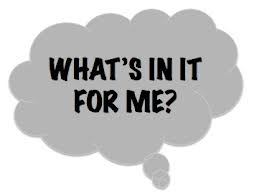 The most important question in all marketing is one we broached in last week’s blog — WIIFM — “What’s In It for Me?”
The most important question in all marketing is one we broached in last week’s blog — WIIFM — “What’s In It for Me?”
With e-mail you have to convert the WIIFM for your reader quickly, and I mean within seconds.
Many times, just with a glance of the subject line, you are asking your recipient to quickly calculate their investment in reading your message.
Think about your organization, and how you communicate with donors. Every time you ask them to open a piece of direct mail, look at an e-mail or visit your website, there is a transaction. It is not a one-time thing either, every time you have to convince them of their WIIFM.
This entire concept is presented by Safkow in this passage:
“Suppose for some reason, that you really wanted to read the newspaper advertisements today. Your eyes are scanning over the pages of many ads, one of which catches your eye. You decide to not turn the page, but to look at the heading for that ad. How long do you think you are willing to spend to determine if the WIIFM is worth your stopping to read further? A study showed that people are willing to invest or spend only 1.54 seconds of time to make that determination.”
Wow! As I read on, Safko unveiled some great information to help maximize my e-mail efforts.
Your subject line has to convince your recipient in roughly 1.5 seconds whether he should move on to the next stage of investment.
If they decide to continue reading, you now have a whopping 5 seconds! Although much more time than 1.5 seconds, it only allows a person to read about one sentence.
So, within the first seconds of reading your e-mail message, your reader must find WIIFM to remain engaged. If you successfully do this, you move into the third phase which is conversion.
Your reader is likely to read on and follow your call to action, or click-through to your website.
Always remember . . . your e-mail message should always be about building and strengthening a relationship with the reader.
Practice makes Perfect
 As you work to perfect your strategies, it is important to take some time to test it through what Safko calls segmenting.
As you work to perfect your strategies, it is important to take some time to test it through what Safko calls segmenting.
Segmenting is no more than splitting your distribution list. Split the list into five and send the exact same body of the message, but with five different subject lines. When doing this, remember to:
- Pay close attention to the nouns, verbs and adjectives you use.
- Take your time and be deliberate.
- Send it out and see if there was a difference in the open rates or click-through rates.
Next, test the first line, again taking care with how you craft it. See the results and keep doing what seems to work.
Finally, test some different times of the day in sending the e-mails.
Ultimately, after about a year, you will have perfected your delivery to maximize your efforts and engage your readers.
How have you worked to perfect your e-mail efforts? What challenges have you found? Success?


 Safko explains that social media marketing is like going to a networking event, a party, a trade show, church, or anywhere large groups of people gather.
Safko explains that social media marketing is like going to a networking event, a party, a trade show, church, or anywhere large groups of people gather. Your non-profit brand is powerful. It is coveted by major corporations. It doesn’t matter if you are a major non-profit juggernaut like Boy Scouts or Girl Scouts or if you’re a teeny-tiny rowboat out there in the vast ocean of non-profit organizations. You are still valued. The mere fact that you are a non-profit organization, regardless of your mission, in and of itself is valued by corporate America.
Your non-profit brand is powerful. It is coveted by major corporations. It doesn’t matter if you are a major non-profit juggernaut like Boy Scouts or Girl Scouts or if you’re a teeny-tiny rowboat out there in the vast ocean of non-profit organizations. You are still valued. The mere fact that you are a non-profit organization, regardless of your mission, in and of itself is valued by corporate America. The following are all facts (OK, they are facts
The following are all facts (OK, they are facts  Have you heard of the “Halo Effect“?
Have you heard of the “Halo Effect“?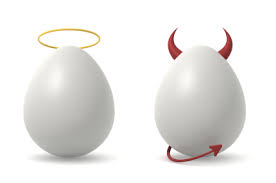 You may be wondering what I mean by “abusing your non-profit brand“. Here is just a short list of neglectful things:
You may be wondering what I mean by “abusing your non-profit brand“. Here is just a short list of neglectful things: As I said in an earlier post this week, I am currently in Reno, Nevada at Boys & Girls Clubs of America’s Pacific Leadership Conference. The conference is being held at Silver Legacy Resort & Casino. Of course, in order to get from the hotel to the conference sessions, you need to walk through the casino where you are bombarded by all sorts of “shiny objects”.
As I said in an earlier post this week, I am currently in Reno, Nevada at Boys & Girls Clubs of America’s Pacific Leadership Conference. The conference is being held at Silver Legacy Resort & Casino. Of course, in order to get from the hotel to the conference sessions, you need to walk through the casino where you are bombarded by all sorts of “shiny objects”. In an effort to make the time pass more quickly, I started making a list. Admittedly, I started thinking way outside of the box, but here is some of what I came up with:
In an effort to make the time pass more quickly, I started making a list. Admittedly, I started thinking way outside of the box, but here is some of what I came up with:




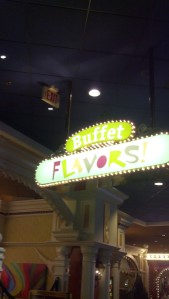
 Over the years, I’ve urged non-profit organizations to exercise tremendous caution when contemplating a cause related marketing strategy as part of their resource development plan. There was the December 2012 post titled “
Over the years, I’ve urged non-profit organizations to exercise tremendous caution when contemplating a cause related marketing strategy as part of their resource development plan. There was the December 2012 post titled “
 If you want to know more about this campaign, Forbes magazine’s Alicia Jessop did a nice job in an October 2012 article titled “
If you want to know more about this campaign, Forbes magazine’s Alicia Jessop did a nice job in an October 2012 article titled “ A few months ago, I had a horrible experience with my favorite airline. Long story short . . . delay, delay, delay, delay, loaded on the plane, equipment malfunction, delay, delay and finally up-up-and-away. A whole day was lost. However, in that catastrophe, I was able to learn something about Twitter and the new age of customer service. In the last few weeks, I’ve been reminded of this experience when two bloggers talked about Twitter. So, I thought I’d we’d look Twitter a little more closely today, especially as it relates to non-profit organizations.
A few months ago, I had a horrible experience with my favorite airline. Long story short . . . delay, delay, delay, delay, loaded on the plane, equipment malfunction, delay, delay and finally up-up-and-away. A whole day was lost. However, in that catastrophe, I was able to learn something about Twitter and the new age of customer service. In the last few weeks, I’ve been reminded of this experience when two bloggers talked about Twitter. So, I thought I’d we’d look Twitter a little more closely today, especially as it relates to non-profit organizations. I am on Twitter every day. I’m not there very long. I’m not a Twitter expert. I’m sure that I am doing lots and lots wrong in the eyes of social media experts. However, I do see lots of content and most of those who I’m following are non-profit organizations.
I am on Twitter every day. I’m not there very long. I’m not a Twitter expert. I’m sure that I am doing lots and lots wrong in the eyes of social media experts. However, I do see lots of content and most of those who I’m following are non-profit organizations. This is a tough question to answer because I suspect it may vary slightly from agency-to-agency. However, some of the better non-profit organizations are tweeting the following:
This is a tough question to answer because I suspect it may vary slightly from agency-to-agency. However, some of the better non-profit organizations are tweeting the following: Sometimes I see things at just the right time and in the right place, and it results in me seeing something differently. Usually, when this happens it results in an AH-HA moment. This is exactly what happened to me yesterday when I opened an email from my friends at
Sometimes I see things at just the right time and in the right place, and it results in me seeing something differently. Usually, when this happens it results in an AH-HA moment. This is exactly what happened to me yesterday when I opened an email from my friends at  So, the title of today’s blog post had the word “AH-HA” in it, which implies that my friends at Non-Profit Humour inspired a light bulb of some sort.
So, the title of today’s blog post had the word “AH-HA” in it, which implies that my friends at Non-Profit Humour inspired a light bulb of some sort. Yes, yes, yes . . . I know what you’re thinking: “Our agency doesn’t have things like hotel rooms, flights and cups of coffee to give away like these for-profit corporations.” But are you sure about that? Because I’ve attended many charity auctions in my life.
Yes, yes, yes . . . I know what you’re thinking: “Our agency doesn’t have things like hotel rooms, flights and cups of coffee to give away like these for-profit corporations.” But are you sure about that? Because I’ve attended many charity auctions in my life. As you can probably imagine, I subscribe to a lot of things — everything from eNewsletters to blogs — and I do a lot of reading. It helps me be a better non-profit consultant, and equally important it helps me be a better thought-leader / blogger. This brings me to an article written by Cody Switzer in The Chronicle of Philanthropy titled “
As you can probably imagine, I subscribe to a lot of things — everything from eNewsletters to blogs — and I do a lot of reading. It helps me be a better non-profit consultant, and equally important it helps me be a better thought-leader / blogger. This brings me to an article written by Cody Switzer in The Chronicle of Philanthropy titled “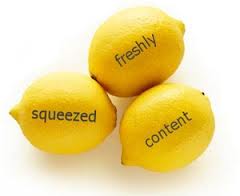 Cody’s article about the
Cody’s article about the 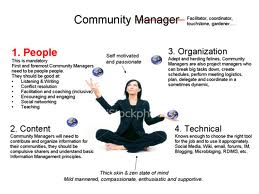 This person isn’t a “technology person” working in your IT department. In fact, they don’t need to have many of those skill sets because you either already have an a) IT person on your payroll, b) relationship with an IT consulting firm or c) utilize “in-the-box” technology (e.g. Press Publisher, 1and1.com, etc) that comes with a toll-free help desk when things get dicey.
This person isn’t a “technology person” working in your IT department. In fact, they don’t need to have many of those skill sets because you either already have an a) IT person on your payroll, b) relationship with an IT consulting firm or c) utilize “in-the-box” technology (e.g. Press Publisher, 1and1.com, etc) that comes with a toll-free help desk when things get dicey.
 They wanted me to round my total up to the nearest dollar. What I thought I had read was that they would donate (out of their pocket) the amount of the rounded sum. (You can see the screenshots of the information they provided me to the right of this paragraph)
They wanted me to round my total up to the nearest dollar. What I thought I had read was that they would donate (out of their pocket) the amount of the rounded sum. (You can see the screenshots of the information they provided me to the right of this paragraph)

